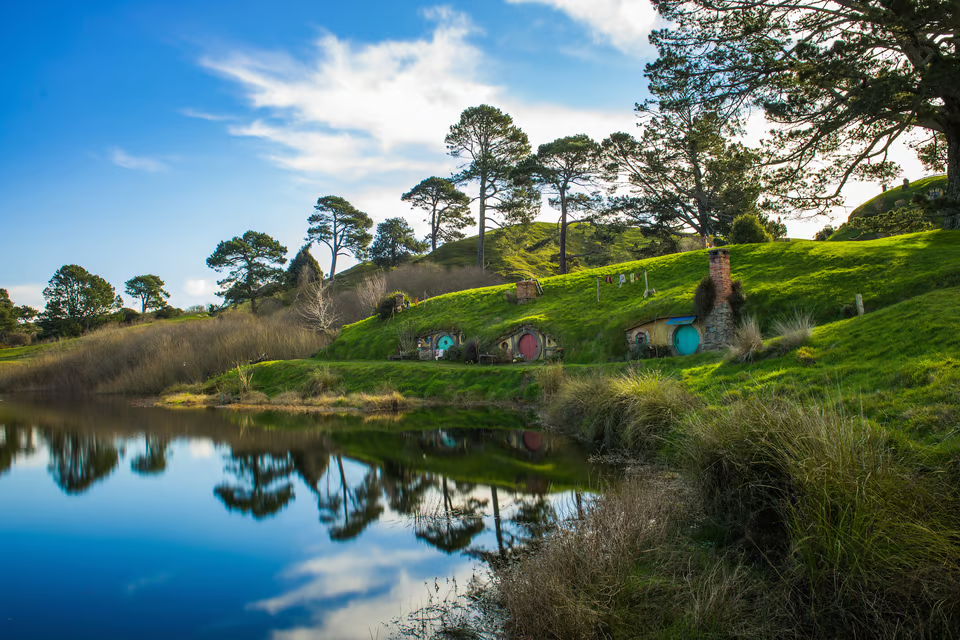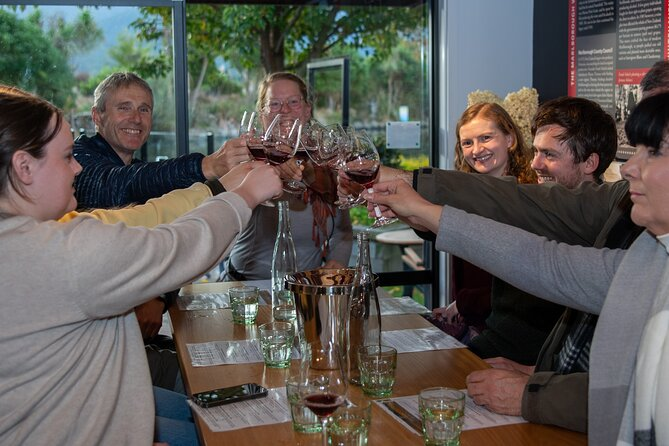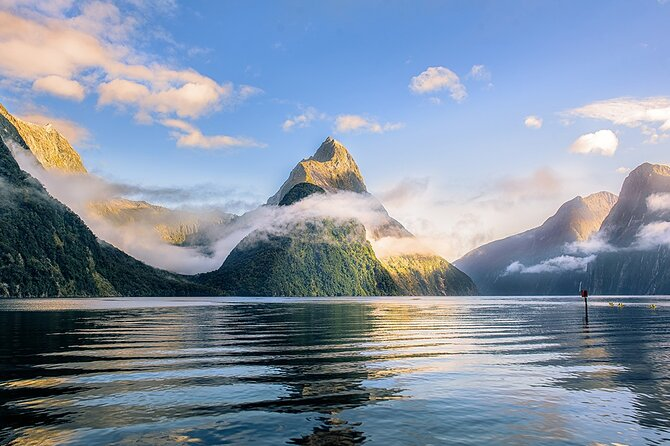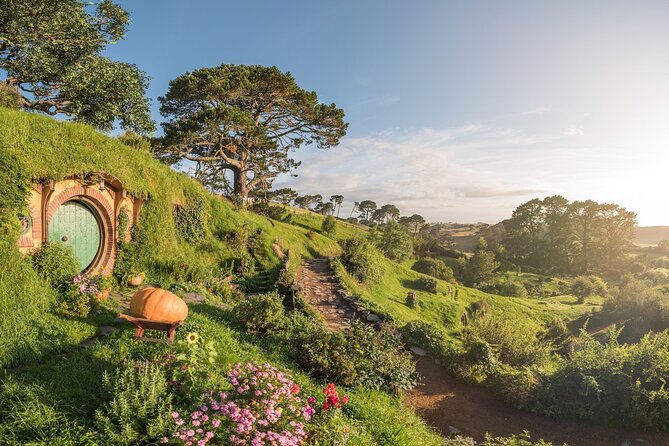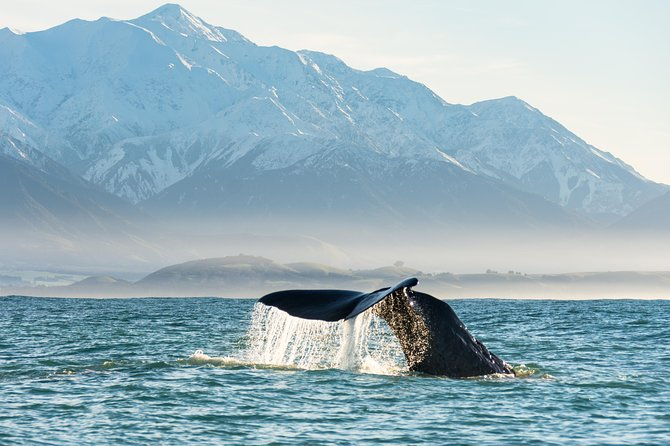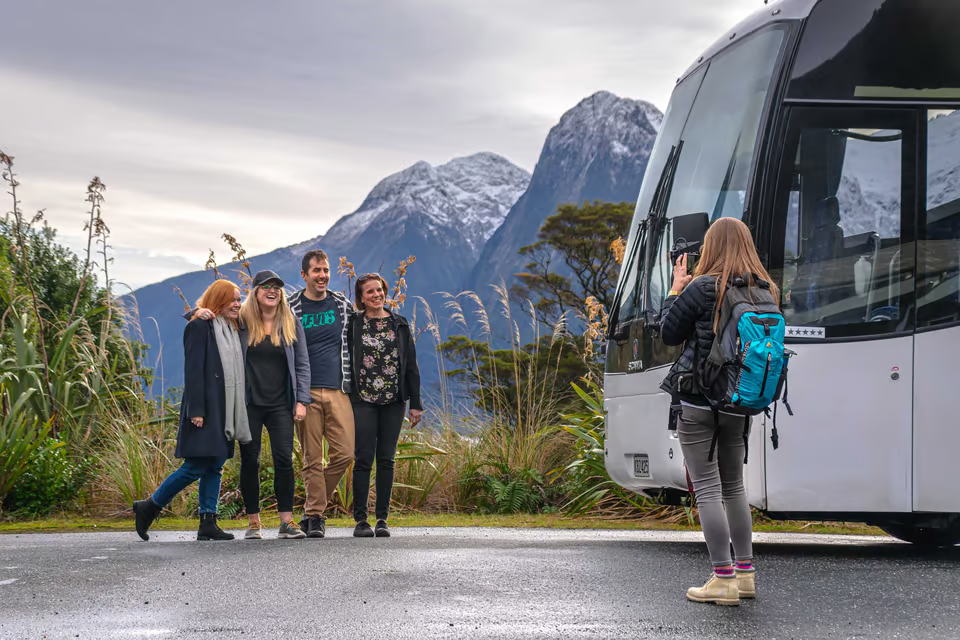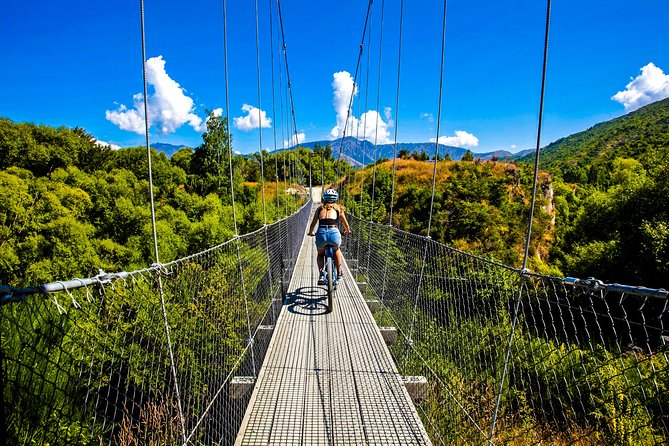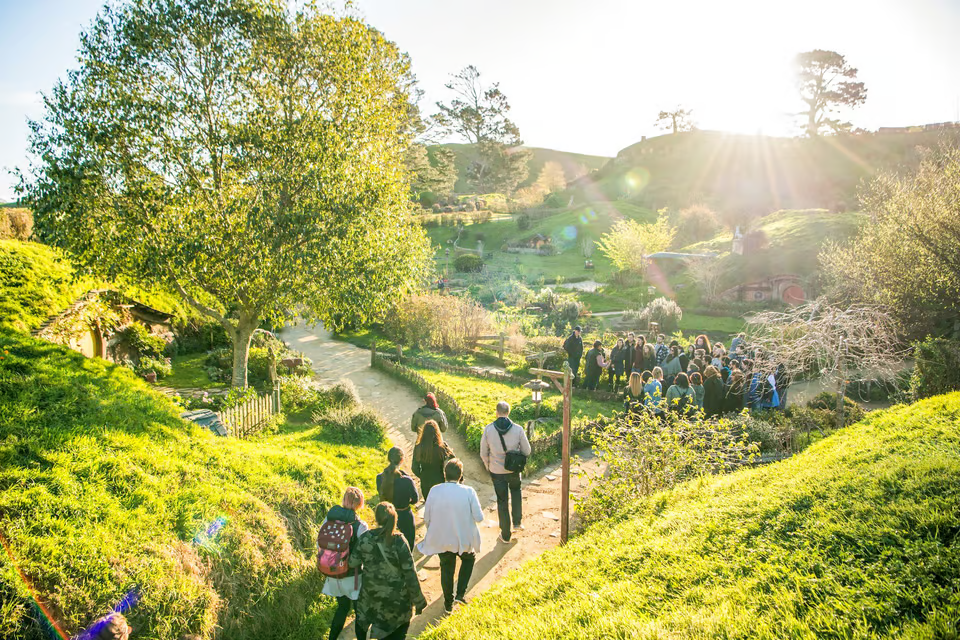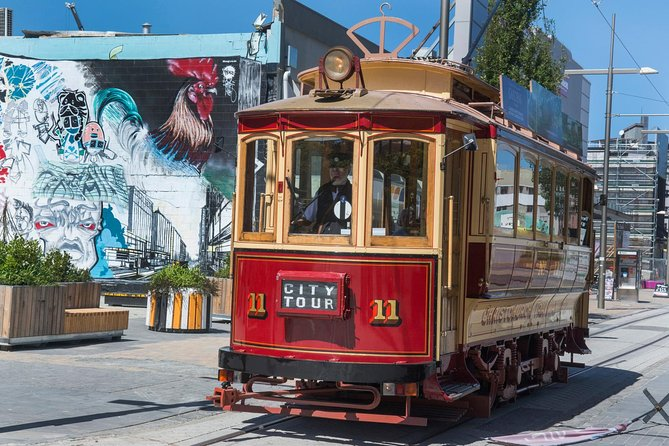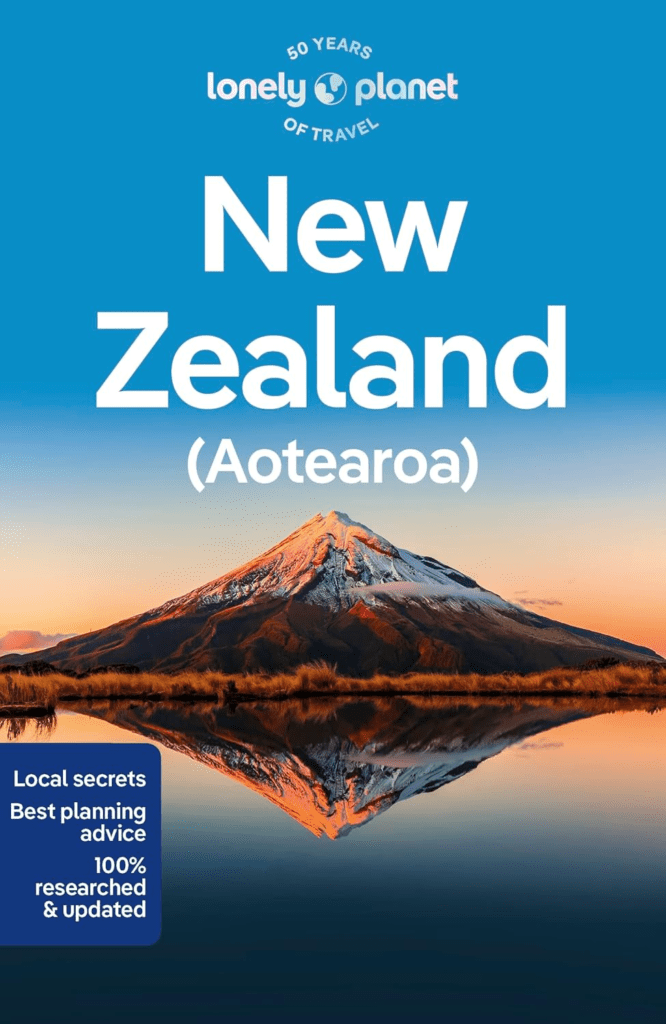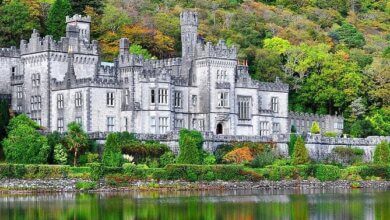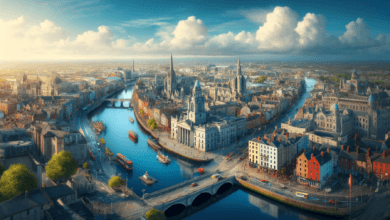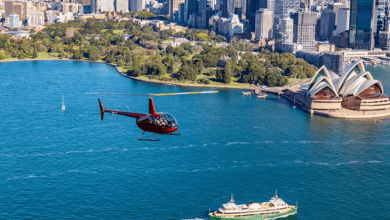The 15 Best Ways to Plan a Trip to New Zealand in 2025
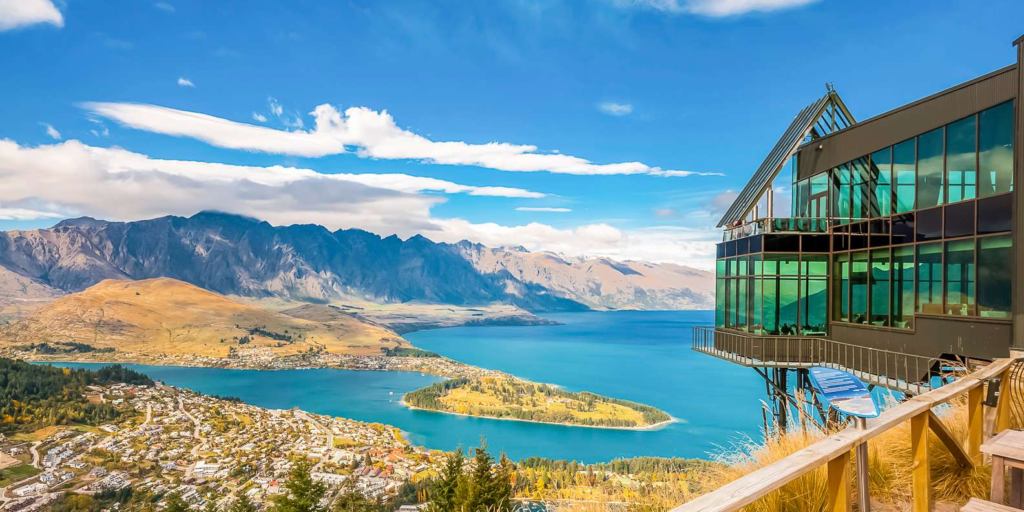
Planning a trip to New Zealand is an exciting endeavor that offers countless opportunities for adventure, natural beauty, and cultural experiences.
This guide is designed to help you craft the perfect itinerary while exploring the best that New Zealand has to offer.
1: Understanding New Zealand’s Geography
When planning how to plan a trip to New Zealand, understanding the country’s unique geography is essential for creating an itinerary that suits your travel style.
New Zealand is divided into two main islands and several smaller ones, each offering its own distinct attractions and experiences.
North Island (Te Ika-a-Māui)
The North Island is known for its geothermal activity, rich Maori culture, and bustling urban centers.
- Auckland: New Zealand’s largest city is a hub for culture, dining, and scenic harbors. Use an Auckland map to navigate iconic attractions like the Sky Tower and Waiheke Island.
- Rotorua: Famous for its geysers, hot springs, and Maori cultural experiences, including the traditional Hāngī.
- Wellington: The nation’s capital, known for its vibrant arts scene, Te Papa Museum, and cable car.
Map of New Zealand
Located in the Southern Hemisphere, New Zealand’s South Island is positioned above the North Island on the map.
South Island (Te Waipounamu)
The South Island is celebrated for its dramatic landscapes, adventure activities, and natural beauty.
- Queenstown: Known as the adventure capital of the world, offering bungee jumping, skiing, and jet boating.
- Christchurch: A city of resilience and charm, with stunning gardens and a gateway to the Southern Alps.
- Fiordland National Park: Home to Milford Sound, often referred to as the “eighth wonder of the world.”
Stewart Island (Rakiura)
Located south of the South Island, Stewart Island is a tranquil haven for nature enthusiasts.
- Ideal for spotting kiwi birds in their natural habitat and exploring the Rakiura Track.
Waiheke Island
A short ferry ride from Auckland, Waiheke Island is famous for its vineyards, beaches, and arts community. It’s a must-visit for wine lovers and those seeking relaxation.
Chatham Islands
Remote and rugged, the Chatham Islands are an off-the-beaten-path destination offering unique cultural and natural attractions, including ancient Moriori carvings and diverse bird species.
Maps and Navigation Tips
- Use a New Zealand North Island Map and South Island Map to locate major attractions and plan your routes.
- Online tools and mobile apps can help you discover hidden gems and off-the-beaten-path destinations.
By understanding the geography of New Zealand, you can craft an itinerary that captures the essence of this incredible destination, from the cultural hubs of the North Island to the majestic landscapes of the South Island.
2: Best Time to Visit New Zealand
When planning how to plan a trip to New Zealand, choosing the right time to visit can make all the difference. Each season offers unique experiences, catering to diverse preferences and travel styles.
Summer (December to February)
New Zealand’s summer is perfect for outdoor adventures and exploring its stunning landscapes.
- Activities: Enjoy water sports, hiking, and beach days in places like Auckland, Bay of Islands, and Queenstown.
- Weather: Warm and sunny, with average temperatures ranging from 20–30°C (68–86°F).
- Events: Experience vibrant festivals like the Auckland Lantern Festival and Wellington’s CubaDupa.
Autumn (March to May)
Autumn brings mild weather, fewer crowds, and breathtaking fall foliage.
- Destinations: Visit Christchurch for its colorful gardens and take scenic drives through Queenstown and Central Otago.
- Activities: Perfect for wine tours in Marlborough or hiking in Fiordland National Park.
- Weather: Cooler temperatures, ranging from 10–20°C (50–68°F), with less humidity.
Winter (June to August)
Winter transforms New Zealand into a wonderland for snow enthusiasts and cozy retreats.
- Destinations: Ski resorts in Queenstown, Wanaka, and Mt. Hutt offer world-class slopes.
- Activities: Enjoy glacier hiking on Franz Josef Glacier and hot pools in Rotorua.
- Weather: Crisp and cold, with temperatures between 1–12°C (34–54°F).
Spring (September to November)
Spring is ideal for seeing New Zealand’s natural beauty come to life.
- Highlights: Witness blooming gardens in Christchurch and baby wildlife in Kaikoura and Stewart Island.
- Activities: Explore the Rotorua Skyline Gondola or take a road trip along the South Island coastline.
- Weather: Mild temperatures from 10–20°C (50–68°F), with a mix of sunny and rainy days.
Key Considerations
- Regional Variations: The North Island generally has a warmer climate, while the South Island experiences cooler and more varied weather.
- Peak Seasons: Summer and winter are peak tourist times, so book accommodations and activities early.
- Shoulder Seasons: Autumn and spring offer lower prices, fewer crowds, and pleasant weather.
By choosing the best time to visit based on your interests, you can ensure your trip to New Zealand is perfectly tailored for a memorable adventure.
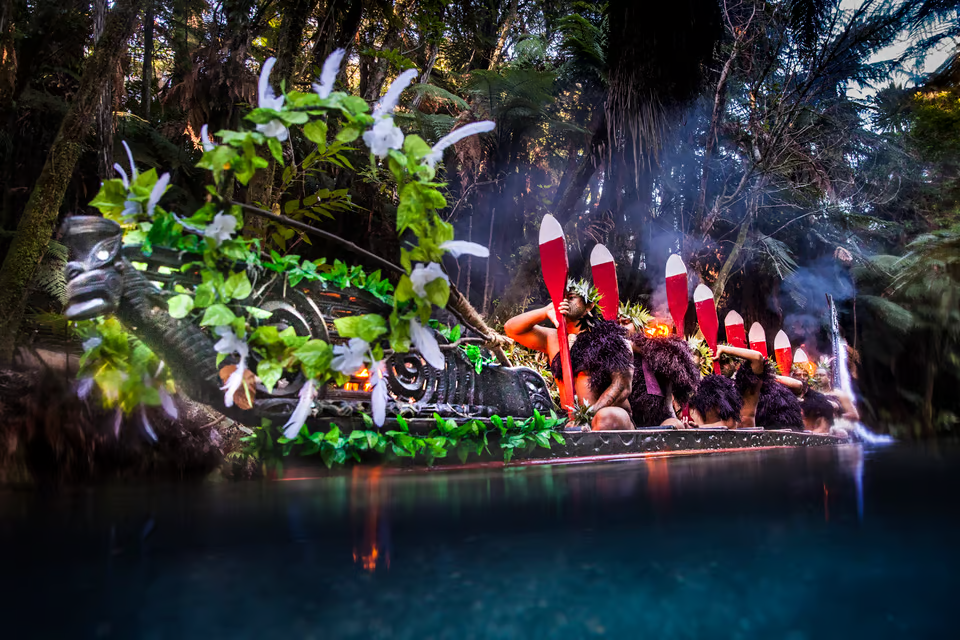
3: Crafting Your New Zealand Itineraryimage of
When considering how to plan a trip to New Zealand, crafting a well-structured itinerary is key to making the most of your visit. With so much to see and do, here’s how to design your perfect adventure.
Start with Key Destinations
- North Island Highlights:
- Auckland: Explore the largest city in New Zealand, known for its vibrant harbor and attractions like the Sky Tower and Waiheke Island.
- Rotorua: Experience geothermal wonders, Maori cultural performances, and adrenaline-pumping activities like the Rotorua Luge.
- Wellington: Visit the nation’s capital for cultural landmarks such as the Te Papa Museum and a ride on the historic cable car.
- South Island Highlights:
- Queenstown: Dubbed the adventure capital of the world, offering bungee jumping, jet boating, and skiing.
- Christchurch: Known as the Garden City, explore its botanic gardens and modern art galleries.
- Fiordland National Park: Discover natural beauty at Milford Sound, often referred to as the “eighth wonder of the world.”
Plan by Interests
- Adventure Seekers: Head to Queenstown for bungee jumping, skydiving, and other thrill-seeking activities. Don’t miss hiking opportunities in Fiordland National Park.
- Nature Lovers: Explore the scenic beauty of Lake Taupō, the Southern Alps, and the Otago Peninsula.
- Cultural Enthusiasts: Immerse yourself in Maori culture in Rotorua or learn about the country’s history in Wellington.
Allocate Your Time Wisely
- For a comprehensive trip, spend at least 10 days in New Zealand:
- 5 days in the North Island: Explore cities, geothermal wonders, and cultural landmarks.
- 5 days in the South Island: Focus on natural beauty and adventure activities.
- For shorter trips, prioritize either the North Island or South Island, depending on your interests.
Include Must-Do Activities
- New Zealand Escorted Tours: Join guided tours for stress-free exploration of top attractions.
- Unique Experiences: Take a Hobbiton Movie Set tour, cruise through Milford Sound, or enjoy wine tasting in Marlborough.
- Outdoor Adventures: Try glacier hiking on Franz Josef Glacier or cycling along the Otago Rail Trail.
Leave Room for Flexibility
- Weather in New Zealand can be unpredictable, especially in the South Island, so include buffer days for unforeseen changes.
- Allow downtime to relax and soak in the serene landscapes, such as those around Lake Wakatipu.
By tailoring your itinerary to your interests and allocating time wisely, your trip to New Zealand will be both memorable and seamless.
4: Top Attractions and Activities
New Zealand is packed with world-class attractions and activities that cater to diverse interests. Here are the highlights to include in your trip:
- North Island Highlights:
- Auckland: Explore iconic landmarks like the Sky Tower and Auckland’s beautiful harbor. Take a day trip to Waiheke Island for wine tours and beach relaxation.
- Rotorua: Discover geothermal wonders, including geysers and hot springs. Don’t miss the Rotorua Skyline Gondola and Luge rides for stunning views and thrills.
- Wellington: Visit the Te Papa Museum, ride the historic cable car, and enjoy the vibrant café culture in New Zealand’s capital.
- South Island Highlights:
- Queenstown: The adventure capital of the world, offering bungee jumping, jet boating, and scenic cruises on Lake Wakatipu.
- Christchurch: Stroll through the Botanic Gardens, visit the International Antarctic Centre, and explore the city’s vibrant arts scene.
- Milford Sound: Cruise through one of the most stunning fjords in the world, often referred to as the “eighth wonder of the world.”
- Unique Experiences:
- Take a wine tour in the Marlborough Region, famous for its Sauvignon Blanc.
- Visit the Hobbiton Movie Set in Matamata, a must for fans of The Lord of the Rings.
- Explore Dunedin’s historic architecture and spot rare wildlife on the Otago Peninsula.
- Adventure Activities:
- Go glacier hiking on Franz Josef Glacier or Fox Glacier.
- Try biking tours through New Zealand’s stunning landscapes.
- Experience active adventures like kayaking in Abel Tasman National Park.
By including these attractions and activities in your itinerary, you’ll experience the best that New Zealand has to offer, creating unforgettable memories.
5: Transportation and Travel Tips
Navigating New Zealand is an integral part of how to plan a trip to New Zealand. Here’s a guide to getting around efficiently and enjoying the journey:
- Rental Cars: Renting a car is the most flexible way to explore. Drive through stunning routes like the South Island Road Trip, which takes you through iconic locations such as Queenstown, Milford Sound, and Franz Josef Glacier.
- Public Transport: Use intercity buses for budget-friendly travel. Services like InterCity connect major cities and towns, offering a reliable way to see the country.
- Scenic Train Journeys: Experience breathtaking views on routes like the TranzAlpine, which runs between Christchurch and Greymouth.
- Domestic Flights: For long-distance travel, consider flights between key destinations like Auckland and Queenstown or Wellington and Christchurch.
- Ferry Services: Cross between the North Island and South Island via the Interislander or Bluebridge ferries. These services also offer spectacular views of the Cook Strait.
Tips for Travelers:
- Driving in New Zealand: Remember to drive on the left-hand side of the road. Be prepared for winding roads, especially in the South Island.
- Travel Insurance: Ensure you have comprehensive coverage for any unexpected events.
- Pack Smart: Pack for diverse weather conditions, as the climate can vary widely between regions.
By planning your transportation and preparing for your journey, you’ll make the most of your New Zealand adventure, ensuring a smooth and enjoyable experience.
6: Costs and Budgeting
When thinking about how to plan a trip to New Zealand, understanding the costs and creating a budget is essential. Here’s what you need to know:
- Flights and Transportation:
- International flights to Auckland, Wellington, or Queenstown can vary greatly depending on the season. Booking early often secures the best deals.
- Domestic travel costs, such as flights or rental cars, should be included. Factor in fuel expenses for road trips like the South Island Road Trip or exploring Rotorua and Taupō.
- Accommodation:
- New Zealand offers a wide range of options, from budget hostels to luxury lodges.
- Expect to pay around NZD 100–200 per night for mid-range hotels in cities like Christchurch or Auckland.
- Activities and Tours:
- Adventure activities like bungee jumping in Queenstown or a cruise in Milford Sound can range from NZD 50–300 per person.
- Cultural experiences, such as a Maori village tour in Rotorua, are typically priced around NZD 100–150.
- Food and Dining:
- Meals at casual restaurants cost approximately NZD 20–40 per person.
- Self-catering is an economical option, especially for extended stays.
- Travel Insurance:
- Comprehensive travel insurance is essential. It usually costs around 5–7% of your total trip expenses.
Tips to Save Money:
- Travel during the shoulder seasons (autumn and spring) to take advantage of lower prices.
- Use discount cards like the BBH Club Card for savings on accommodation and activities.
- Consider package deals that combine tours, accommodations, and transportation.
By understanding costs and planning accordingly, you’ll be able to make the most of your budget and enjoy everything New Zealand has to offer without breaking the bank.
Section 7: Essential Tips for Travelers
When considering how to plan a trip to New Zealand, equipping yourself with practical tips will help ensure a smooth and enjoyable journey. Here’s what you need to know:
Travel Documents and Entry Requirements
- New Zealand Travel Declaration: All visitors must complete the required forms, including the New Zealand Travel Declaration, before arrival.
- Ensure your passport is valid for at least six months beyond your travel dates.
- Check visa requirements based on your nationality. Many countries enjoy visa-free travel for short visits.
Packing Essentials
- Weather-Appropriate Clothing: New Zealand’s weather can vary significantly, so pack layers to adapt to changing conditions. Essentials include a waterproof jacket and sturdy walking shoes.
- Travel Accessories: A universal adapter for New Zealand’s power outlets and a reusable water bottle for outdoor adventures.
- Guidebooks and Maps: While apps are handy, a reliable New Zealand travel guide book or offline map can be invaluable in remote areas.
Health and Safety
- Travel Insurance: Comprehensive coverage is a must, particularly for adventure activities like bungee jumping in Queenstown or glacier hiking on Franz Josef Glacier.
- Sun Protection: The UV index in New Zealand is high, so pack sunscreen, sunglasses, and a hat.
- Emergency Services: The emergency number in New Zealand is 111. Keep it handy for any urgent needs.
Local Customs and Etiquette
- Respect Maori Culture: Learn a few phrases in Te Reo Maori, such as “Kia ora” (hello), and observe customs like removing your shoes when entering a Marae.
- Driving Etiquette: Drive on the left-hand side of the road and adhere to local speed limits. Be cautious on winding roads, especially in the South Island.
- Tipping: While not mandatory, tipping for exceptional service is appreciated.
Tech and Connectivity
- Wi-Fi Access: Free Wi-Fi is available in most cities like Auckland and Christchurch, but rural areas may have limited connectivity.
- Local SIM Cards: Consider purchasing a local SIM card for reliable mobile data during your travels.
Maximizing Your Experience
- Plan for Unique Experiences: Include activities like the Rotorua Luge, wine tours in the Marlborough Region, or a visit to the Hobbiton Movie Set.
- Allow for Downtime: While there’s plenty to see, leave time to relax and enjoy New Zealand’s serene landscapes, such as Lake Taupō or Milford Sound.
- Explore Off the Beaten Path: Venture to lesser-known spots like Stewart Island or Chatham Islands for a truly unique experience.
By following these essential tips, you’ll navigate New Zealand with confidence, ensuring your trip is both enjoyable and memorable.
8: Must-Try Food and Drink in New Zealand
No trip to New Zealand is complete without indulging in the country’s rich culinary offerings. From iconic dishes to world-renowned wines, food lovers are in for a treat. Here’s a guide to the must-try food and drink experiences to consider as you plan how to plan a trip to New Zealand.
Local Delicacies
- Pavlova: This meringue-based dessert topped with fresh cream and fruits is a New Zealand favorite and a must-try.
- Green-Lipped Mussels: Found in coastal areas, these are best enjoyed fresh from local seafood restaurants in places like Marlborough and Auckland.
- Hāngī: A traditional Maori cooking method where food is slow-cooked in an earth oven. It’s an authentic experience often offered in cultural tours in Rotorua.
- Lamb Dishes: New Zealand is famous for its lamb, often served roasted with seasonal vegetables.
Renowned Wine Regions
- Marlborough Sauvignon Blanc: New Zealand’s wine industry is globally recognized, and Marlborough is its crown jewel. Take a wine tour to sample crisp Sauvignon Blanc while enjoying picturesque vineyard views.
- Hawke’s Bay: Known for its full-bodied reds like Merlot and Syrah, this region also offers excellent winery tours.
- Central Otago: Famous for its Pinot Noir, the wineries here provide stunning backdrops of mountains and lakes.
Craft Beers and Beverages
- Craft Breweries: Cities like Wellington and Christchurch boast a vibrant craft beer scene with locally brewed IPAs, lagers, and stouts.
- Flat White: New Zealand’s signature coffee style, similar to a latte but creamier, is a must for coffee enthusiasts.
Farm-to-Table Dining
- New Zealand prides itself on fresh, locally sourced ingredients. Enjoy farm-to-table meals in Queenstown, Taupō, or boutique restaurants in Auckland.
Street Food and Markets
- Explore local farmers’ markets for artisanal cheeses, fresh produce, and baked goods. Popular spots include the Auckland Night Markets and the Wellington Harbourside Market.
Fusion Food & Māori culture
Experience Māori culture in Rotorua with a traditional welcome ceremony, cultural performance, and 3-course fusion dinner at Te Pā Tū, including return transfers and insights into local customs.
Tips for Foodies
- Food Tours: Book a guided tour in Auckland or Rotorua for curated experiences.
- Wine Trails: Use a New Zealand travel planner to organize visits to multiple vineyards in regions like Marlborough or Central Otago.
- Local Seafood: Don’t miss crayfish in Kaikoura or oysters in Bluff.
By indulging in these food and drink experiences, you’ll add an unforgettable culinary dimension to your adventure in New Zealand.
9: New Zealand’s Unique Wildlife
Encountering unique wildlife is a highlight of any trip to New Zealand. With its isolated geography, the country boasts an array of rare species and breathtaking nature experiences. Here’s how to incorporate wildlife exploration into your plans for how to plan a trip to New Zealand.
Iconic Wildlife Species
- Kiwi Birds: As New Zealand’s national symbol, kiwi birds are nocturnal and best seen in sanctuaries like the Zealandia Ecosanctuary in Wellington or the Kiwi Birdlife Park in Queenstown.
- Albatross Colonies: Visit the Royal Albatross Centre in Dunedin to see these majestic seabirds in their natural habitat.
- Hector’s Dolphins: Found along the South Island’s coasts, especially near Akaroa, these are the world’s smallest and rarest dolphins.
Best Wildlife Locations
- Stewart Island: Known for its rich birdlife, including the opportunity to see kiwi birds in the wild.
- Otago Peninsula: Spot penguins, seals, and albatrosses near Dunedin.
- Kaikoura: A hotspot for whale watching, dolphins, and seals. Take a guided boat tour to maximize your chances of sightings.
Wildlife Tours and Activities
- Whale Watching in Kaikoura: A must-do experience, especially during migration seasons.
- Glowworm Caves: Explore the Waitomo Caves on the North Island for a magical encounter with glowworms.
- Marine Reserves: Visit the Poor Knights Islands or Goat Island for snorkeling and diving among vibrant marine life.
Conservation and Respect
- Support sanctuaries and eco-friendly tours to ensure your wildlife encounters help preserve New Zealand’s natural heritage.
- Follow guidelines when visiting reserves, such as maintaining a safe distance from animals and staying on marked paths.
By including wildlife exploration in your itinerary, you’ll experience another dimension of New Zealand’s natural beauty, making your journey unforgettable.
10: Comparing North and South Island Experiences
When planning how to plan a trip to New Zealand, one of the most common questions travelers face is deciding between the North Island and the South Island. Each offers unique attractions, landscapes, and experiences that cater to different travel styles.
Highlights of the North Island
- Cultural Experiences: Immerse yourself in Maori culture by visiting Rotorua for traditional performances and a chance to experience a Hāngī meal.
- Iconic Landmarks: Explore the Hobbiton Movie Set in Matamata, the geothermal wonders of Rotorua, and the vibrant urban life of Auckland.
- Beaches and Coastal Beauty: The Bay of Islands and Coromandel Peninsula are renowned for their stunning beaches and water activities.
Highlights of the South Island
- Adventure Capital: Visit Queenstown, the adventure capital of New Zealand, offering bungee jumping, skydiving, and jet boating.
- Breathtaking Scenery: The South Island Road Trip showcases dramatic landscapes, including Milford Sound, Aoraki/Mount Cook, and the Franz Josef Glacier.
- Wildlife Encounters: Spot seals, penguins, and albatrosses on the Otago Peninsula and enjoy whale watching in Kaikoura.
Key Differences
- Climate: The North Island generally has a warmer climate, while the South Island is cooler and offers alpine environments.
- Travel Style: The North Island is ideal for cultural and city experiences, while the South Island is perfect for nature lovers and adventure seekers.
Why Choose Both?
For the ultimate New Zealand adventure, consider an itinerary that spans both islands. Use a New Zealand travel planner to allocate time for the highlights of each region, such as spending a few days in Auckland before heading to Queenstown and Christchurch.
By understanding the unique offerings of both islands, you can craft an itinerary that aligns with your interests and ensures a memorable trip to New Zealand.
11: Frequently Asked Questions About Visiting New Zealand
When thinking about how to plan a trip to New Zealand, it’s natural to have plenty of questions. This section addresses the most common concerns and provides helpful tips to ensure your journey is seamless and stress-free.
How Many Days Should You Spend in New Zealand?
- Ideal Trip Length: For a well-rounded experience, plan for at least 10 days in New Zealand. This allows time to explore both the North Island and South Island highlights, such as Auckland, Rotorua, Queenstown, and Milford Sound.
- Shorter Trips: Even a 5–7-day itinerary can be rewarding if focused on a specific region, such as the South Island Road Trip.
What Is the Best Way to Travel Around New Zealand?
- Self-Drive: Renting a car is the most flexible option, especially for exploring rural areas like the South Island.
- Public Transport: Intercity buses and scenic train journeys, like the TranzAlpine, are great alternatives for budget-conscious travelers.
- Tours: Join a New Zealand escorted tour to enjoy expert guides and stress-free travel.
What Should You Pack for Your Trip?
- Clothing: Pack layers to accommodate New Zealand’s variable weather. Essentials include a waterproof jacket, sturdy walking shoes, and warm clothing for cooler regions like Queenstown.
- Accessories: A universal power adapter and a reusable water bottle are must-haves.
- Travel Documents: Don’t forget your passport, visas, and any necessary New Zealand travel declarations.
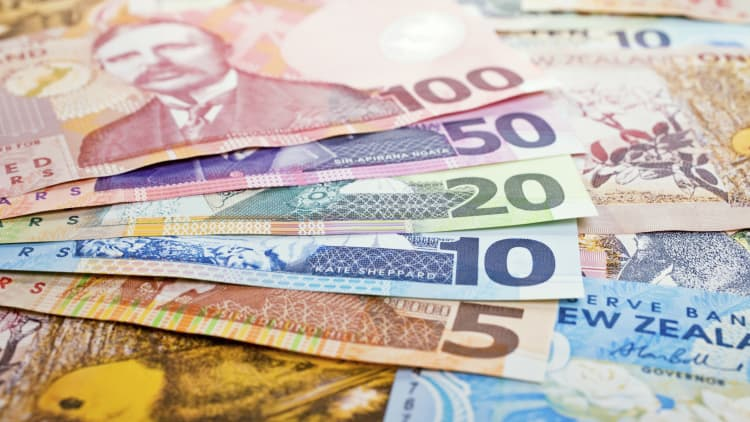
Is New Zealand Expensive to Visit?
- New Zealand can be budget-friendly with proper planning. Use tools like a New Zealand trip planner to manage expenses for accommodations, tours, and meals. Consider package deals for attractions like the Hobbiton Movie Set or Rotorua Skyline Gondola.
When Is the Best Time to Visit New Zealand?
- Summer (December–February): Ideal for outdoor adventures and beach activities.
- Winter (June–August): Perfect for skiing in alpine regions like Queenstown.
- Spring and Autumn: These shoulder seasons offer fewer crowds and pleasant weather for sightseeing.
What Are the Must-See Attractions in New Zealand?
- North Island: Explore geothermal wonders in Rotorua, the vibrant culture of Wellington, and the beaches of the Bay of Islands.
- South Island: Visit Milford Sound, Franz Josef Glacier, and the adventure capital of Queenstown.
Do You Need Travel Insurance?
- Yes! Comprehensive travel insurance is highly recommended, particularly for adventure activities like bungee jumping or glacier hiking.
Tips for First-Time Visitors
- Respect Maori Culture: Learn basic phrases in Te Reo Maori, such as “Kia ora” (hello), and observe cultural protocols.
- Driving Safety: Remember to drive on the left-hand side and plan for winding roads in regions like the South Island.
- Local Etiquette: Tipping is appreciated but not mandatory, and casual attire is widely accepted.
By addressing these common questions, you’ll feel more confident as you prepare for your unforgettable adventure in New Zealand.
12: Sustainable Travel in New Zealand
When planning how to plan a trip to New Zealand, embracing sustainable travel practices ensures that you contribute to the preservation of the country’s natural beauty and cultural heritage. Here are ways to travel responsibly while exploring New Zealand.
Eco-Friendly Transportation Options
- Public Transport: Use buses or scenic train journeys like the TranzAlpine to reduce your carbon footprint.
- Electric Vehicles: Rent electric or hybrid cars to explore regions like Auckland, Rotorua, and the South Island responsibly.
- Cycling: Consider biking tours in areas like Queenstown or the Otago Rail Trail for a sustainable way to see the sights.
Conservation-Focused Activities
- Visit eco-friendly attractions such as the Zealandia Ecosanctuary in Wellington or the Royal Albatross Centre in Dunedin.
- Participate in wildlife tours that adhere to strict conservation guidelines, like dolphin watching in Kaikoura or glowworm tours in Waitomo Caves.
Supporting Local Businesses
- Choose accommodations and tours that are certified by Qualmark, New Zealand’s official tourism quality assurance program.
- Shop locally at markets in Auckland or Wellington to support artisans and reduce the environmental cost of imported goods.
Leave No Trace
- Follow the Tiaki Promise, a commitment to care for New Zealand’s environment, by sticking to marked trails, disposing of waste responsibly, and respecting wildlife.
- Avoid single-use plastics by carrying reusable items like water bottles and shopping bags.
Educational Experiences
- Learn about Maori traditions and environmental stewardship through cultural tours in Rotorua or Taupō.
- Join eco-tours that teach about New Zealand’s unique ecosystems, such as those in Fiordland National Park.
By incorporating these sustainable practices, your trip to New Zealand will not only be memorable but also beneficial to the environment and local communities.
13: Final Tips for Planning Your Trip to New Zealand
As you prepare for your adventure, here are the final, practical tips to ensure that you make the most of how to plan a trip to New Zealand while incorporating the incredible diversity and charm of this destination.
Maximize Your Itinerary
- Prioritize iconic experiences like exploring the Rotorua Skyline Gondola, cruising in Milford Sound, and visiting the Hobbiton Movie Set.
- Use a New Zealand trip planner to balance must-see attractions such as Queenstown and Auckland with hidden gems like Stewart Island or Dunedin.
Travel Smart
- Pack Essentials: Include layered clothing for the variable weather, a power adapter for New Zealand’s outlets, and sturdy shoes for exploring places like the Otago Peninsula or the South Island Road Trip.
- Plan by Seasons: Summer is ideal for outdoor activities, while winter offers incredible skiing opportunities in Queenstown and the Southern Alps.
Immerse in Culture
- Experience authentic Maori traditions by participating in a Hāngī feast or visiting cultural sites in Rotorua.
- Learn about New Zealand’s history at museums in Wellington or through heritage tours in Christchurch.
Practical Travel Tips
- Transportation: Choose between rental cars for flexibility, public transport for budget travel, or New Zealand escorted tours for a guided experience.
- Consider Heritage-themed transportation options like the Christchurch Tram.
- Booking in Advance: Secure accommodations, activities like the Rotorua Luge, and transportation early, especially during peak seasons.
Indulge in Local Delights
- Savor fresh seafood in Kaikoura and wine in Marlborough, or explore street food markets in Auckland and Wellington.
- Don’t miss New Zealand’s iconic dishes like green-lipped mussels, lamb, or a classic flat white coffee.
Stay Flexible
- Weather in New Zealand can be unpredictable, so always have a backup plan. Whether it’s a rainy day in Dunedin or sudden alpine conditions in the South Island, adaptability is key.
Contribute to Sustainability
- Follow the Tiaki Promise by respecting wildlife and supporting eco-friendly businesses. Consider cycling or using public transport in cities like Auckland and Wellington.
Capture the Memories
- Take advantage of New Zealand’s stunning landscapes for photography. Highlights include Lake Taupō, the Bay of Islands, and the rugged coastline of the South Island.
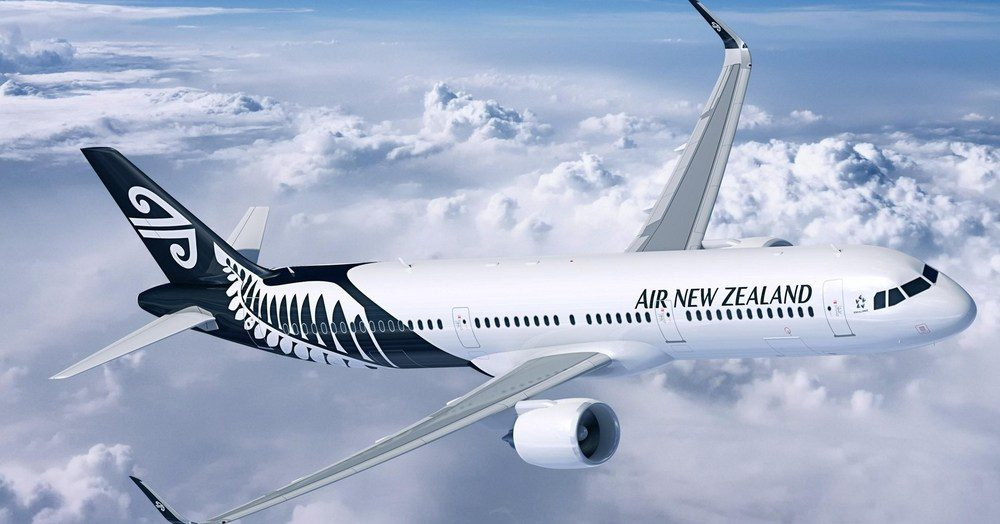
14: Long-Haul Flight Essentials
The flight time from the United States to New Zealand typically ranges between 13 and 18 hours, depending on your departure city, destination, and whether the flight is direct or includes layovers.
Direct Flight Times:
- Los Angeles (LAX) to Auckland (AKL): Approximately 12-13 hours.
- San Francisco (SFO) to Auckland (AKL): Approximately 13 hours.
- Houston (IAH) to Auckland (AKL): Approximately 15 hours.
Flights with Layovers:
- If your flight includes a layover, total travel time can range from 16 to 20+ hours, depending on layover duration and location (e.g., in Australia, Fiji, or Hawaii).
Make your Flight More Enjoyable
Flying to New Zealand from the United States is a long journey, so preparation is key to ensuring a comfortable trip.
Packing the right items will make your flight more enjoyable and help you adjust to the significant time difference upon arrival.
| MLVOC Memory Foam Travel Pillow | Anker PowerCore 20,000mAh Portable Charger | Twelve South AirFly Pro | Convenience Kits International Travel Kit |
|---|---|---|---|
 |  |  |  |
| Why: Stay comfortable and rested with a travel pillow's support. | Why: Keep devices charged for entertainment, reading, or work. | Why: Connect wireless headphones to airplane entertainment. | Why: Stay fresh with essential travel toiletries on long flights (women's & men's kits). |
| Check Price | Check Price | Check Price | Check Price |
Travel Pillow
Why You Need It: Comfort is essential on a long flight, and a travel pillow provides vital neck and head support. It helps you sleep better, reducing neck strain and making your journey restful.
Recommendation: Trtl Pillow Plus or MLVOC Memory Foam Travel Pillow.
Portable Charger/Power Bank
Why You Need It: Keeping your devices charged is crucial for in-flight entertainment, reading, or work. A reliable power bank ensures your gadgets stay powered throughout the long haul.
Recommendation: Anker PowerCore 20,000mAh Portable Charger.
Bluetooth Airline Adapter
Why You Need It: Tired of tangled cords? A Bluetooth adapter lets you connect wireless headphones to the airplane’s audio system seamlessly, enhancing your in-flight entertainment experience.
Recommendation: Twelve South AirFly Pro or Ziocom Bluetooth Transmitter.
Travel-Sized Toiletry Kit for Women
Travel-Sized Toiletry Kit for Men
Why You Need It: Long flights can leave you feeling less than fresh. A travel kit with essentials like toothpaste, a toothbrush, face wipes, and moisturizer keeps you comfortable and refreshed.
Recommendation: Convenience Kits International Travel Kit (TSA-approved).
Melatonin Supplements
Why You Need It: Adjusting to different time zones can be tough. Melatonin can help regulate your sleep on the flight and ease jet lag. Available over the counter in the US, melatonin is often restricted in many other countries, making it a travel essential.
Recommendation: Natrol Melatonin or Nature Made Melatonin.
New Zealand Travel Guide Book
Why You Need It: A comprehensive travel guide is invaluable for exploring New Zealand’s diverse landscapes and culture. It offers expert tips, detailed maps, and insider knowledge to plan your perfect trip.
It’s a great read for the long plane ride over, and once you arrive, it’s even more valuable. Keep in mind that some parts of New Zealand are quite remote, with limited or no cell phone service.
Recommendation: Lonely Planet New Zealand or Fodor’s Essential New Zealand. These guides cover must-see attractions, hidden gems, and practical travel advice.
Enjoy the Trip!
By following these final tips, you’ll ensure a seamless and unforgettable journey, making the most of everything New Zealand has to offer. Safe travels!

